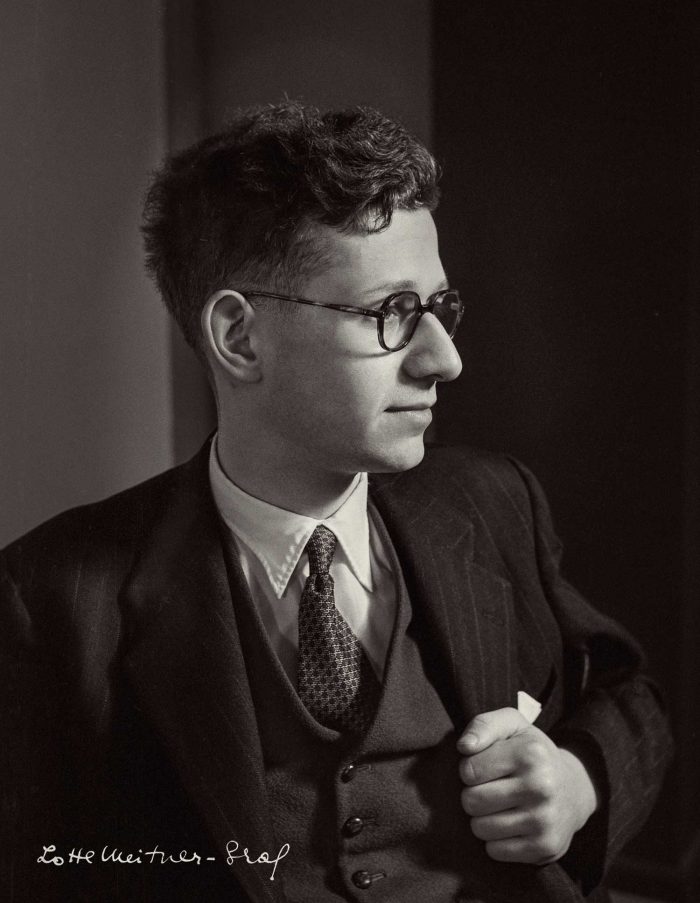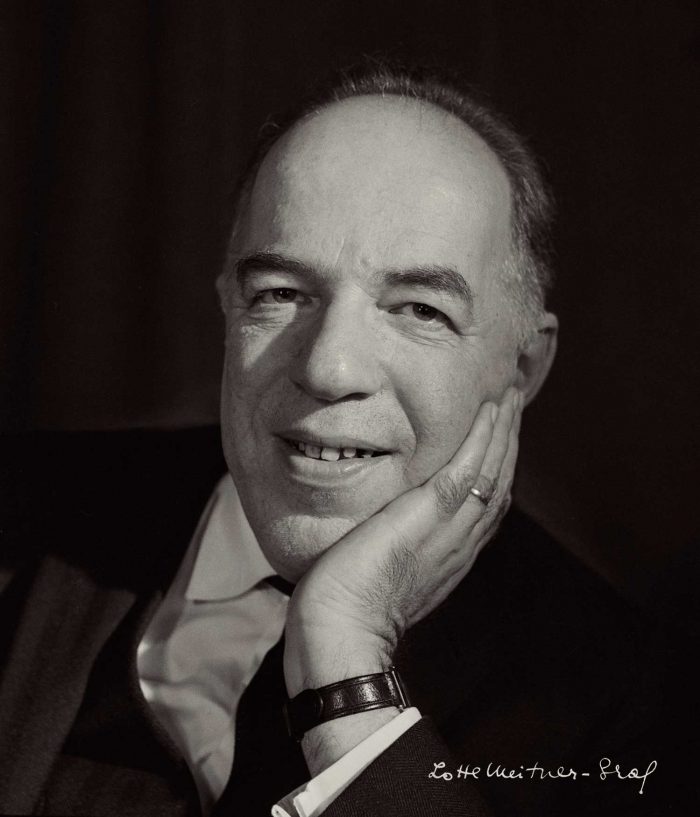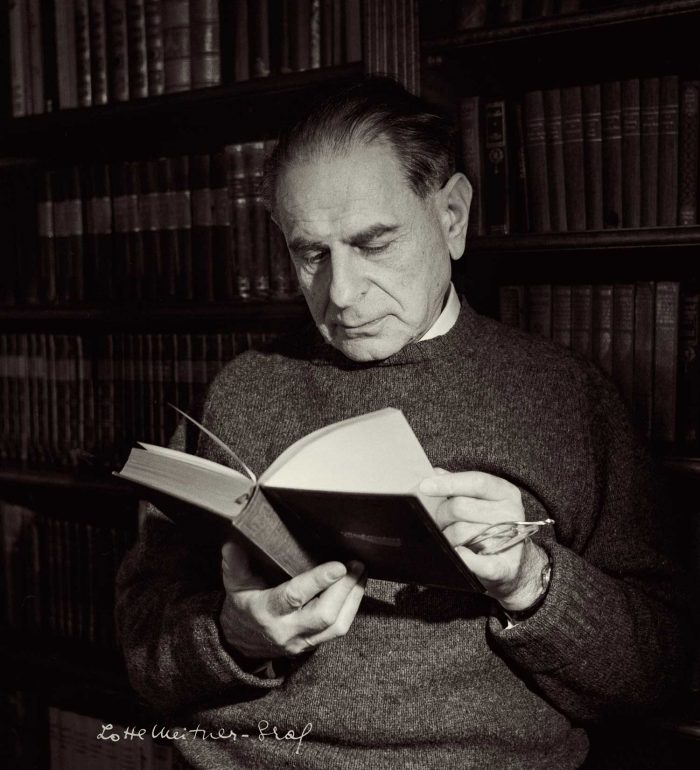



Kristallnacht. It sounds festive. But the Kristall was broken glass carpeting German and Austrian streets on the night of 9 November 1938, when Nazis smashed the windows of every Jewish shop and office they could find, burned down a thousand synagogues, and despatched 30,000 Jews to concentration camps.
So, in Berlin, a Jewish professor of mathematics, Stanislaus Jolles, aged 81, wrote a letter to his Austrian friend of 30 years, Ludwig Wittgenstein, firebrand philosopher long established as a lecturer at Trinity College, Cambridge. Jolles asked Wittgenstein to help get him and his wife Adele out of Germany so that they might live their last years in England.
Wittgenstein had one friend he could turn to. He approached Esther Simpson, a University of Leeds graduate serving as secretary of the Society for the Protection of Science and Learning (SPSL). Over six years, she had played the leading role in extracting 1,500 Jewish and/or dissenting academics from Nazi clutches.
Her cool reply surely shook the philosopher. “Professor Einstein has already written to us about Professor Jolles,” she wrote – and she repeated the refusal she’d given to the author of the theory of relativity: “Our assistance is limited to scholars and scientists who are still able to work.” Therefore, the SPSL couldn’t consider “scholars who, however pre-eminent in their day, are now of an age when they should be enjoying their pensions.”
Little enjoyment remained for Professor Jolles. He died ‘of unknown causes’ three years later. Soon after, his wife died in Theresienstadt concentration camp. Esther Simpson had grown used to making Sophie’s Choice many times a day.
Her extraordinary job began with the creation in 1933 of the SPSL, under its original name, the Academic Assistance Council (AAC). Not coincidentally, this followed Hitler becoming Chancellor of Germany on 30 January. Then, on 7 April, Jews and other opponents were barred from government employment. This left more than 1,000 university teachers out of work.



The AAC’s eminent founders included welfare state originator William Beveridge, radical economist John Maynard Keynes and ‘father of nuclear physics’ Sir Ernest Rutherford. To protect academics threatened by fascism, they launched a fundraising campaign topped off by the proceeds from an Einstein lecture in the Royal Albert Hall.
Then they appointed Esther Simpson as ‘assistant secretary’ – a modest job title she soon rendered absurd – on £2 10s a week. She came with no “money behind her” and set about dealing with the 30-a-day applicants attracted by the AAC’s star-studded connections. Working until ten o’clock every night, she didn’t take a holiday until 1951, never stopped at all except to play her violin… or luxuriate in a box of Belgian chocolates, her one extravagant taste.
She organised transport from Germany, accommodation in Britain, and bank accounts, then regular payments – enough to ‘tick over’, she put it – for up to two years while the immigrants settled in, learned English if necessary, and looked for academic or commercial work.
The flow increased after the 1935 Nuremburg Laws stripped Jews of citizenship and again following the 1938 German Anschluss invasion of Austria. Accordingly, Esther explored the AAC/SPSL’s contacts in America. She reckoned lecture tours could shop-window her talented team. Almost all did line up a job – especially those who followed her pride-swallowing instruction to forget Ivy League fantasies: “You have to concentrate on the middle west, the smaller universities, just as any American has to do.”
On 3 September 1939, when Britain declared war on Germany and the borders closed, Esther’s role seemed redundant. But that didn’t last long…
Why Esther Simpson? Who was she? While she never gave a ‘revealing’ personality interview, her story speaks directly about ‘what made her’. Leeds had a lot to do with it.
Follow us @leedsalumni
‘Simpson’ was an alias. Her Lithuanian Jewish parents had fled a Russian pogrom and settled in Leeds, her father a ‘worker in the garment industry’ in the city. She was born Esther Sinovitch, 31 July 1903, the youngest of four, attended Leeds Girls’ Modern School in Willow Terrace Road and took music lessons for one shilling a term.
When she entered the University of Leeds in 1921, she really began to explore her potential, discover what she cared about and consider what she might do about it. Amongst the 2,000 students enrolled at Leeds, she was one of 20 there on a City Senior Scholarship. She studied hard towards a first, played violin in two orchestras (one conducted by alternating identical twins) and became secretary of the Imperial War Relief Fund’s University branch, raising money for students and academic staff in Central Europe suffering the aftermath of the First World War.
But in terms of her moral certainties and capacity for almost infinite dedication, her brother Israel (Modern Languages 1921, MA French 1922) probably inspired her. Five years older than Esther, he’d recently served two years in jail as a First World War ‘absolutist’ conscientious objector. Brother and sister would have known the popular French lecturer Jean-Philippe Inebnit a Quaker, who was possibly the route to the pacifist faith that they both embraced.
Israel also played a part in the ‘career’ side when he introduced her to Leeds French lecturer Roger Soltau who, in 1928, offered her a job in the London office of the International Fellowship of Reconciliation (IFOR), another endeavour to counteract the War’s lingering horrors. A year later, she moved to IFOR’s HQ in Vienna, where she befriended the intellectual set. She’d just left IFOR when she received a telegram from the AAC that revealed her life’s mission.
Come 1940, Esther’s work took an unexpected turn. Suddenly she found herself campaigning to free academics interned by the British. Five hundred of them fell victim to a tabloid uproar about the enemy within. But she wasn’t having it. She wrote thousands of letters, goading the government into examining every case and, within a few months, nearly all were re-liberated – including molecular biologist Max Perutz, art historian Ernst Gombrich, and spinal injury specialist Sir Ludwig Guttmann (who originated the Paralympics).
But the Second World War didn’t end oppression. So, for 22 years from 1944 she continued her mission through a different organisation, the Society for Visiting Scientists. In 1966 she returned as a volunteer for the AAC’s direct descendant organisation now called the Council for At-Risk Academics (CARA). Over these years she brought academics out of Czechoslovakia, Greece, South Africa, Nigeria, Bangladesh and more.
Esther admitted to the elitism of her niche and pointed out with pride that among her refuge-seekers she could count 74 Fellows of The Royal Society, 34 Fellows of The British Academy and 16 Nobel Prize winners.
Other ambivalences she preferred not to discuss in public. For instance, back in 1933 the AAC decided not to appoint any Jews to their board because their presence might put off supporters. And when Esther joined their staff she promptly changed her name from Sinovitch to Simpson by deed poll (one source says her father had adopted the name back in the 1900s). Looking back it would be easy to condemn these moves as hypocritical. Or perhaps Esther deployed the catalyst of pragmatism to convert ideals into action.
Another ethical conundrum for Esther was the lines of research some of ‘her’ scientists pursued, in England or America. Otto Robert Frisch and Francis Simon contributed to the invention of the atomic bomb. And one of her AAC founder friends, Hungarian nuclear physicist Leo Szilard, wrote the 1939 letter to President Franklin D Roosevelt which proved a major factor in his approving the Manhattan Project. Recalling a conversation with Szilard when he tried to explain what he was up to, she said: “It sounded to me like a bigger and better bomb. I said that was something I did not like at all.”
Never paid much, often paid nothing at all, always unsung outside her circle of intellectual giants, Esther did become rich in honours at least leading up to her death in 1996. But her favourite took her back to Leeds, the University’s 1989 award of an honorary doctorate. “My four years there were the source not only of happiness but of pride, undiminished by the years,” she wrote.
Paying tribute to Esther, the South African freedom-fighter/law lecturer Albie Sachs, whom she helped through crises in 1966 and 1988, brought out something of the caring character which lay behind her nun-like devotion to her work: “I regard her as an exemplary person of loveliness and kindness and efficient support. I don’t think we need heroes in the world. We need courage and solidarity.”
The college recognises in Esther Simpson someone who in the darkest times of this troubled century has kept alight the pure flame of human decency.
Esther Simpson OBE Refugee co-ordinator 1903 – 1996
Text from citation upon her election as honorary member of the Royal College of Physicians in 1991